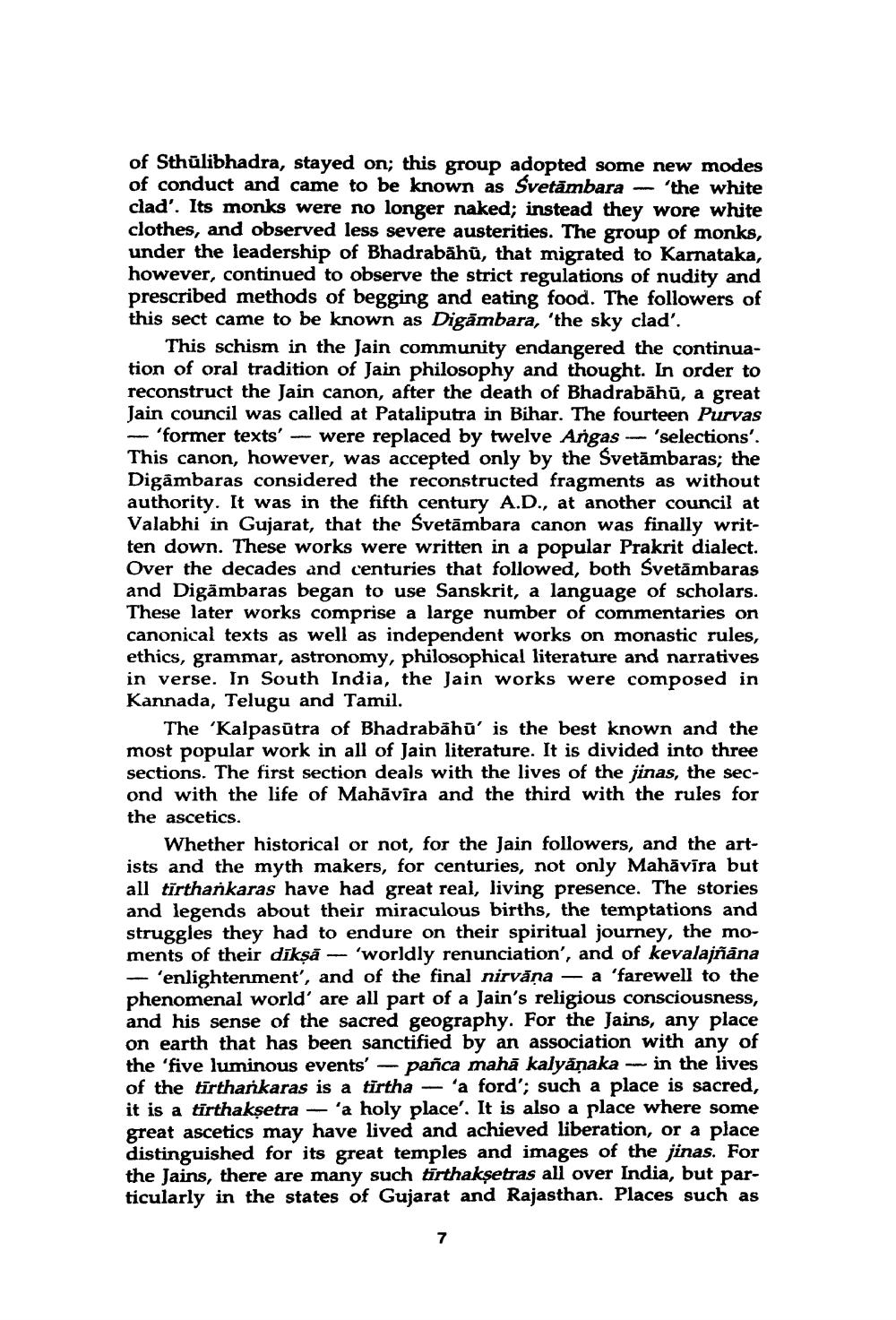________________
of Sthulibhadra, stayed on; this group adopted some new modes of conduct and came to be known as Svetambara 'the white clad'. Its monks were no longer naked; instead they wore white clothes, and observed less severe austerities. The group of monks, under the leadership of Bhadrabähu, that migrated to Karnataka, however, continued to observe the strict regulations of nudity and prescribed methods of begging and eating food. The followers of this sect came to be known as Digambara, 'the sky clad'.
This schism in the Jain community endangered the continuation of oral tradition of Jain philosophy and thought. In order to reconstruct the Jain canon, after the death of Bhadrabahū, a great Jain council was called at Pataliputra in Bihar. The fourteen Purvas
'former texts' were replaced by twelve Angas -'selections'. This canon, however, was accepted only by the Svetămbaras; the Digāmbaras considered the reconstructed fragments as without authority. It was in the fifth century A.D., at another council at Valabhi in Gujarat, that the Svetambara canon was finally written down. These works were written in a popular Prakrit dialect. Over the decades and centuries that followed, both Svetambaras and Digambaras began to use Sanskrit, a language of scholars. These later works comprise a large number of commentaries on canonical texts as well as independent works on monastic rules, ethics, grammar, astronomy, philosophical literature and narratives in verse. In South India, the Jain works were composed in Kannada, Telugu and Tamil.
The 'Kalpasūtra of Bhadrabahū' is the best known and the most popular work in all of Jain literature. It is divided into three sections. The first section deals with the lives of the jinas, the second with the life of Mahāvīra and the third with the rules for the ascetics.
Whether historical or not, for the Jain followers, and the artists and the myth makers, for centuries, not only Mahāvīra but all tirthankaras have had great real, living presence. The stories and legends about their miraculous births, the temptations and struggles they had to endure on their spiritual journey, the moments of their dīkṣā - 'worldly renunciation', and of kevalajñāna 'enlightenment', and of the final nirvana a 'farewell to the phenomenal world' are all part of a Jain's religious consciousness, and his sense of the sacred geography. For the Jains, any place on earth that has been sanctified by an association with any of the 'five luminous events' - pañca mahā kalyāṇaka in the lives of the tirthankaras is a tīrtha'a ford'; such a place is sacred, it is a tirthakṣetra -'a holy place'. It is also a place where some great ascetics may have lived and achieved liberation, or a place distinguished for its great temples and images of the jinas. For the Jains, there are many such tirthakṣetras all over India, but particularly in the states of Gujarat and Rajasthan. Places such as
-
7




